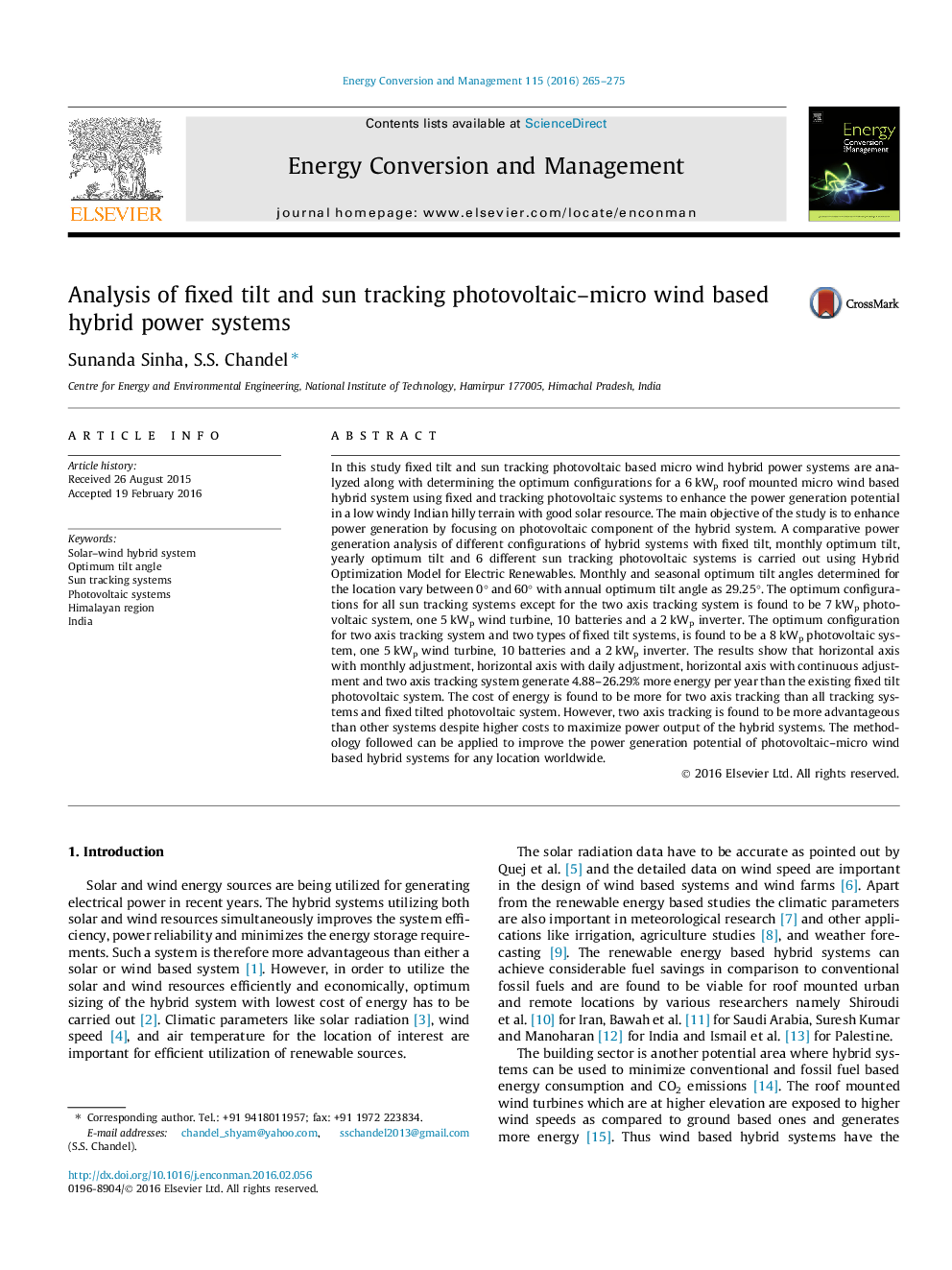| Article ID | Journal | Published Year | Pages | File Type |
|---|---|---|---|---|
| 760322 | Energy Conversion and Management | 2016 | 11 Pages |
•Power generation by a roof mounted photovoltaic–micro wind hybrid system is explored.•Optimum hybrid configurations using fixed and sun tracking photovoltaic systems are determined.•Analysis of hybrid systems with optimally tilted and different sun tracking systems is presented.•Two axis sun tracking systems are found to generate 4.88–26.29% more energy than fixed tilt system.•Hybrid system installed at optimum tilt angle is found to be cost effective than a sun tracking system.
In this study fixed tilt and sun tracking photovoltaic based micro wind hybrid power systems are analyzed along with determining the optimum configurations for a 6 kWp roof mounted micro wind based hybrid system using fixed and tracking photovoltaic systems to enhance the power generation potential in a low windy Indian hilly terrain with good solar resource. The main objective of the study is to enhance power generation by focusing on photovoltaic component of the hybrid system. A comparative power generation analysis of different configurations of hybrid systems with fixed tilt, monthly optimum tilt, yearly optimum tilt and 6 different sun tracking photovoltaic systems is carried out using Hybrid Optimization Model for Electric Renewables. Monthly and seasonal optimum tilt angles determined for the location vary between 0° and 60° with annual optimum tilt angle as 29.25°. The optimum configurations for all sun tracking systems except for the two axis tracking system is found to be 7 kWp photovoltaic system, one 5 kWp wind turbine, 10 batteries and a 2 kWp inverter. The optimum configuration for two axis tracking system and two types of fixed tilt systems, is found to be a 8 kWp photovoltaic system, one 5 kWp wind turbine, 10 batteries and a 2 kWp inverter. The results show that horizontal axis with monthly adjustment, horizontal axis with daily adjustment, horizontal axis with continuous adjustment and two axis tracking system generate 4.88–26.29% more energy per year than the existing fixed tilt photovoltaic system. The cost of energy is found to be more for two axis tracking than all tracking systems and fixed tilted photovoltaic system. However, two axis tracking is found to be more advantageous than other systems despite higher costs to maximize power output of the hybrid systems. The methodology followed can be applied to improve the power generation potential of photovoltaic–micro wind based hybrid systems for any location worldwide.
Graphical abstract6 kWp photovoltaic–micro wind based hybrid power system analysis in a Indian Western Himalayan location.Figure optionsDownload full-size imageDownload as PowerPoint slide
